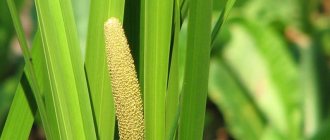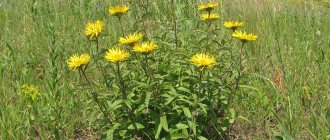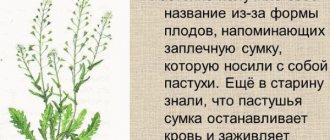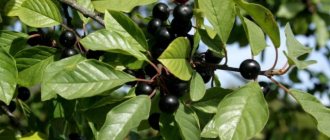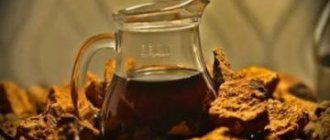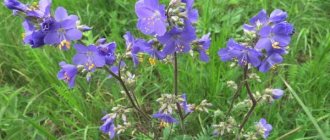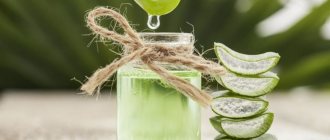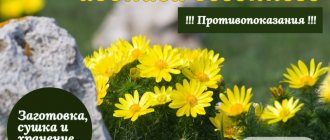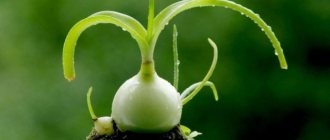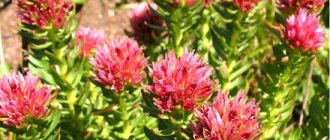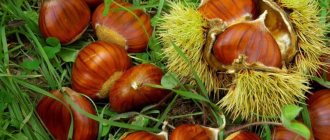Calendula officinalis is a species of herbaceous annual plant from the Asteraceae family. A better known name is marigold. Many people grow this crop in plots for decorative purposes, not realizing the rich medicinal properties of the plant. Cultivation of marigolds is simple - the plant is unpretentious to either soil or growing conditions.
The height of the plant is 70 cm. Flowering occurs in July-August, the flowers are yellow-orange. It is the flowers and flower baskets that have medicinal value.
Calendula has pronounced medicinal properties, but like any medicinal plant it has a number of contraindications for use.
Places of growth and types of plants
This culture is found in every corner of the globe. The only exceptions are areas of deserts and permafrost. The plant is most widespread in Asia, Western Europe and the Mediterranean. In Russia, calendula grows everywhere except in the far regions of the Far North and highlands. There are about 20 types of calendula in total. Most of the plants are used for ornamental plantings. Medicinal marigolds are used to make a large number of drugs in both official and folk medicine.
Briefly about the composition
This unpretentious annual has earned love all over the world. Grown in Europe, Asia and Australia, preferring temperate climates. Bright yellow or orange baskets of inflorescences are pleasing to the eye in flower beds, vegetable gardens and flower beds and are used in folk and traditional medicine.
A variety of dosage forms and cosmetics are prepared from marigolds:
- infusion;
- decoction;
- ointment;
- tincture;
- oil.
The plant owes its wide range of uses to its rich chemical composition. Inflorescence baskets contain:
- ascorbic acid;
- carotenoids;
- essential oil;
- tannins;
- organic acids;
- resins;
- triterpene glycosides;
- bitterness.
Description of calendula
Plant height is from 20 to 80 cm. The root is a taproot, from which roots branch in different directions, providing nutrition. The stems are erect, thick and ribbed. Their surface is covered with hard, short, sticky hairs. Light green leaves are densely located on branched stems. The lower ones have an alternate arrangement, obovate shape, are on a petiole, their length is 13 cm. The upper leaves are smaller, oblong. They have sparse, hard hairs.
Medicinal calendula flowers are baskets located at the tops of the stems and have a flat, bare receptacle. The inflorescences form a hemispherical, flattened shape. The petals have a linear, pointed shape and are arranged in one or two rows. The flowers on the edges are female; those in the middle can be of both sexes or asexual. The color depends on the variety and varies from light yellow to dark orange. The seeds (fruits) are light brown, curved, and often close into a ring. The plant blooms from June to mid-autumn.
What are the benefits of calendula?
Due to its rich composition, the plant has a positive effect on many systems and internal organs of the body. The benefits of calendula for the body are that the plant:
- is a good diuretic and choleretic agent;
- helps with colds - calendula is often used for coughs as a phlegm thinner;
- relieves inflammation and helps well with stomatitis, sore throat, periodontal disease and pharyngitis;
- has a beneficial effect on the stomach and intestines - calendula is very useful for gastritis and ulcers;
- stops bleeding and heals skin damage;
- increases immune resistance and improves body tone;
- helps in the fight against dermatitis and skin ailments;
- has a brightening effect on the skin when applied externally and removes age spots and freckles;
- strengthens the vascular system and heart.
With regular use, the plant can even serve as a cancer prevention - the substances contained in the composition promote healthy cell renewal. Calendula is useful for vision - decoctions and infusions protect the eyes from the development of myopia and astigmatism, quickly eliminate inflammation, and reduce the harm from constant work at the computer.
Calendula for women
The benefits of calendula for women's health are expressed in the fact that products based on the plant stop uterine bleeding and fight inflammation due to candidiasis. The beneficial properties of calendula in gynecology are manifested in the regulation of hormonal levels, the plant has a good effect on the nervous system, and is very useful to use during menopause.
Calendula for men
For representatives of the stronger sex, the plant is valuable because it strengthens blood vessels and protects against early heart attacks and strokes. Calendula is highly valued for potency; its beneficial properties are often used by men who are beginning to go bald. The medicinal plant strengthens hair and is responsible for its accelerated growth.
Growing healing marigolds
Calendula is a light-loving plant. In shady places it stretches out, lies down, and the inflorescences become small. Reproduction occurs only by seeds, self-sowing is also possible. The plant sprouts at a temperature of 8–10 degrees. In the autumn, when digging up the soil, organic, phosphorus and potassium fertilizers are applied to the site. In the spring, when loosening the soil, fertilizers containing nitrogen are added. Calendula seeds, the medicinal properties and contraindications of which will be described below, are sown in open ground in the early stages.
For sowing, the smallest seeds located in the central part of the flower basket are selected. From them grow flowers containing a large number of double inflorescences. Planting is done in furrows, the depth of which is 2-4 cm. Care consists of timely weeding, watering and loosening the soil.
Description of the plant
Medicinal calendula belongs to the Asteraceae family. It grows in the middle zone almost everywhere, is quite unpretentious, but loves warmth, sun, and moisture. The height reaches up to 70 cm. The flowers are bright yellow or orange with a diameter of 4 cm, and in decorative varieties - up to 8 cm. It is called marigold because of the shape of the petals.
The plant is an annual, blooms from June to September. Throughout this period, flowers can be collected and prepared, which are mainly used for medical and cosmetic purposes. The more often you pick flower baskets, the more new ones will bloom. And vice versa, if they are not picked in time, the flowering during the season will be sparse.
Only recently and fully bloomed flowers are richest in nutrients. They are plucked 2-3 cm from the basket. Dry at temperatures up to 45° C for about 4 hours. Seeds are collected in the fall in dry weather. Not only the flowers of this plant have beneficial properties, but also its other parts, which are also sometimes used.
Biochemical composition of the plant
Medicinal calendula contains a large number of substances that accelerate metabolic processes and regulate the functioning of body systems. These include:
- Plant sterols are naturally occurring substances that can reduce bad cholesterol.
- Carotenoids are fat-soluble plant pigments. They are isomers of carotene, which is converted in the liver into vitamin A, which helps normalize vision and has a beneficial effect on the condition of the skin.
- Flavonoids are natural substances endowed with antioxidant properties. They have antihistamine, antibacterial and anti-inflammatory effects. Flavonoids help relieve spasms of smooth muscles, produce gastric juice and bile.
- Essential oils have a specific smell and taste and help destroy pathogenic microflora.
- Coumarins have an anti-inflammatory effect.
- Microelements – iron, fluorine, calcium, magnesium, potassium, selenium. As well as vitamins E and C. These substances strengthen the immune system and have a beneficial effect on the walls of blood vessels and the functioning of the heart.
Chemical composition
Calendula flowers are beneficial due to the fact that they contain:
- flavonoids with choleretic, diuretic, healing and antispasmodic effects;
- carotenoids and antioxidants that can neutralize free radicals;
- essential oils that destroy pathogenic bacteria;
- triterpenoids that relieve inflammation;
- sterols that reduce cholesterol concentrations;
- salicylic acid – an antiseptic with anti-inflammatory and analgesic properties;
- coumarins, which can thin the blood, eliminate tumors, and spasms.
100 grams of grass contain the following micro and macroelements:
- potassium – 28.8 mg;
- calcium – 11.4 mg;
- magnesium – 2.5 mg;
- zinc – 1.31 mg;
- manganese – 0.2 mg;
- iron – 0.15 mg;
- boron – 48.4 mcg;
- selenium – 4.2 mcg;
- molybdenum – 1.47 mcg;
- copper – 0.86 mcg;
- nickel – 0.5 mcg;
- strontium – 0.09 mcg;
- chromium – 0.09 mcg;
- aluminum – 0.05 mcg;
- cobalt – 0.03 mcg.
Useful properties of the plant
The strong medicinal properties of marigolds and contraindications, which are very minor, allow it to be used for internal and external use. The flowers and leaves of the plant have the following properties:
- anti-inflammatory;
- antimicrobial – help destroy bacteria, viruses and fungi;
- stimulate the secretion of gastric juice and the production of bile;
- diuretic;
- sweatshop;
- wound healing;
- slow down the development of tumor cells;
- restore damaged tissues;
- help cleanse the body of toxins;
- have a moisturizing effect.
Cooking
Calendula can be added to various salads and soups, and alcoholic drinks. Let's look at some interesting recipes:
- Cheese salad with calendula . Grate 200 grams of any cheese, add 50 grams of calendula flowers and a bunch of green onions. Mix well, season with olive oil, lemon juice and mustard seeds.
- Pouring . Place 1 tbsp in 200 ml of water. l. dried flowers and 1 tsp. peppermint leaves, cook over low heat after boiling for about 5 minutes. Strain the broth, add 200 grams of sugar, simmer for another 5-7 minutes. After cooling, dilute the syrup with 700 ml of vodka, shake well, pour into a glass container and store in the refrigerator.
- Seasoning for meat . It is necessary to dry the calendula inflorescences in an oven or a specialized dryer. It is recommended to choose the largest and brightest flowers (they contain more carotenoids). Grind the dried raw materials in a blender or coffee grinder and add to any meat dishes. The seasoning is also suitable for salads, pilaf, and fish.
Calendula has a bright taste and aroma and can complement any dish on a festive or everyday table.
Indications for the use of medicinal plants
Considering the minor contraindications and medicinal properties of calendula flowers, preparations based on it are quite widely used and are used for diseases:
- Upper respiratory tract - for colds, flu, sore throat, ARVI and bronchitis. Carry out procedures for rinsing the mouth and throat using infusions, alcohol tinctures and decoctions, which help relieve swelling and inflammation and speed up recovery from bacterial, viral and fungal infections.
- Skin damage - having an antiseptic and wound-healing effect, calendula accelerates the healing of wounds, various abrasions, pimples, acne, burns, as well as purulent formations: fistulas, boils, carbuncles.
- Digestive organs - the medicinal properties of marigolds, such as wound healing and antispasmodic, help cure stomach ulcers, gastritis, and inflammation of the gallbladder.
- Liver – in the treatment of cirrhosis and hepatitis, calendula is used to cleanse the liver, as it has a choleretic effect.
- Cardiovascular system - reduces blood pressure, strengthens the heart muscle, normalizes heart rate, thanks to its general strengthening and anti-cholesterol effects.
- Female genital organs - calendula helps in the treatment of uterine bleeding, inflammatory processes in the genital organs, cervical erosion, if problems arise during menopause, and normalization of the menstrual cycle.
- Malignant neoplasms - used as an additional drug to reduce the growth of cancer cells.
- Dental problems – caries, bleeding gums.
Medicinal herbal teas with calendula
More and more herbal teas are gaining popularity, and, instead of regular black or green tea, many people prefer to make a drink from various herbal infusions that suit their taste. If you choose the right medicinal plant, combine it with other medicinal herbs and prepare an infusion or decoction, this can enhance and accelerate the healing effect. The main thing is to know for which diseases, without ignoring existing ones, you can combine herbs for medicinal purposes:
- Calendula, medicinal chamomile, yarrow
It is known that these three plants have similar capabilities for providing a therapeutic effect on a number of diseases, have antibacterial, antiviral, antimicrobial, anti-inflammatory effects, have a beneficial effect on the functioning of the cardiovascular system, produce wound healing effects and etc. - Calendula, sage
Calendula and sage, thanks to the same biochemical nutrients, have antibacterial, anti-inflammatory properties, help normalize the functioning of the gastrointestinal tract, have a calming effect, etc. - Calendula, St. John's wort
Both of these herbs, having rich internal components, have antibacterial, antimicrobial, anti-inflammatory properties, promote rapid healing of wounds and cuts, calm the nervous system, etc. - Calendula, meadowsweet (meadowsweet), mint
Together, these sweet-smelling herbs, thanks to the large number of essential oils, strengthen the nervous system, improve the psycho-emotional state and mood, and have antibacterial, anti-inflammatory, and antimicrobial effects. In small quantities, calendula can also be used along with other herbs in the form of an everyday herbal tea. It will give the drink a pleasant aroma and bright color. And the healing properties of this amazing plant are outlined above.
Contraindications to the use of calendula
For internal use, no absolute contraindications have been identified for medicinal calendula, but in some cases it must be used with caution and under the supervision of a physician. These include:
- Hypotension - people with low blood pressure should not take medications with calendula. They stimulate its further decline.
- Pregnancy period.
- Combined use with sedative drugs - valerian, motherwort. The effect intensifies.
- Heart and vascular diseases.
- Allergic reactions to asteraceous plants such as daisies and daisies.
- Cholelithiasis.
- Children under twelve years of age.
Any practicing physician can provide justification for the use of calendula herb, medicinal properties and contraindications, since this plant is a pharmacopoeial plant and the requirements for the quality of medicinal raw materials are set out in the corresponding article of the State Pharmacopoeia.
Calendula contraindications
Plant preparations should not be used by people suffering from cardiovascular insufficiency and hypotension, as well as pregnant and lactating women. You cannot use calendula if you are hypersensitive. Use with caution in patients with bronchial asthma, hay fever and a tendency to allergies.
Calendula should not be used orally while taking synthetic and herbal sedatives and antidepressants. If you need to drive a car or operate complex machinery, it is not recommended to take calendula preparations orally.
Use of calendula in official medicine
A large number of pharmaceutical preparations are produced from calendula, each of which is endowed with certain properties of the plant that affect the body. The following dosage forms containing calendula are used in traditional medicine:
- Tincture is a transparent, yellow-colored liquid containing 70% alcohol, and is a universal medicine used internally and externally. It is used as a choleretic agent, for the treatment of hypertension, for diseases of the gastrointestinal tract, gall bladder and liver. The tincture is prescribed for gargling and mouthwash for sore throat, gingivitis, and thrush. It has proven itself excellent in the treatment of cuts, bruises, and frostbite. In gynecology, douching is used for cervical erosions and colpitis, and in proctology, therapeutic enemas are used.
- Oil – has antiseptic properties. Doctors recommend using it for burns, cuts, ulcers, insect bites, cracked nipples in women during breastfeeding. The oil has the beneficial properties of calendula and has no contraindications for use. It can be used for any skin type, including those with severe sensitivity, as well as for newborns. The oil is added to creams for the care of the face, hands and feet. For external use only.
- Ointment - release form - glass jars containing 40 g of a yellow substance. Recommended for use for eczema, cuts, cracks, burns, varicose veins, bacterial and fungal skin infections.
- Cream - in addition to calendula, contains soybean oil, echinacea and mallow extract, allantoin and tocopherol. This effective remedy has a minimum of contraindications. The healing properties of marigold flowers and their calming effect make it possible to use the cream to care for the delicate dermis of babies. In addition, the drug helps improve capillary blood circulation, strengthens the walls of blood vessels, and has an analgesic effect. It softens and vitaminizes dry skin, restores firmness and elasticity, and is also used for vaginal itching and irritation.
Marigold tea
I can’t help but mention another popular drink – tea. It can also be prepared from marigolds like a regular herbal one. Dried flowers are poured with boiling water in a teapot at the rate of 1 teaspoon per glass of tea.
If someone finds it a little bitter, you can add mint leaves, which will give the drink a light menthol aroma and soften the taste. Since both calendula and mint have a sedative effect, you should not overuse this tea, and it is better to drink it at night.
Preparation and storage
To use calendula for medicinal purposes, in most cases, calendula flowers are used, much less often the leaves. The plant blooms profusely from June until frost and the opening of flowers occurs every three to five days, which must be completely removed. This method prevents the formation of seeds and promotes generous flowering. The procurement of raw materials is done during the entire flowering period in dry weather.
The healing and medicinal properties of calendula, the contraindications for the use of which are minor, gain maximum strength by 12 o'clock. Therefore, at this time, the inflorescences are picked, in which the tubular flowers have partially opened, and the reed flowers are located in a horizontal position. You can leave a peduncle up to three centimeters long at the basket. Over the summer, up to 20 collections are made. To dry, the flowers are scattered in one layer in a shady place under a canopy on a tarpaulin, burlap or sheets of paper, turning them over periodically. An attic space is well suited for this purpose. The finished inflorescences fall apart. For storage use wooden, tin or glass closed containers. The shelf life of raw materials is one year.
Benefits and harms in diseases
Calendula is used for the prevention and treatment of diseases of the gastrointestinal tract, heart, blood vessels, inflammation of the throat, oral cavity, sore throat, hemorrhoids, cholelithiasis, skin pathologies, pancreatitis, and in gynecology. Application examples:
- Skin treatment. To eliminate rashes and cuts, lotions with calendula infusion, ointments or lotions are most often used. The products relieve inflammation, prevent the spread of infection, and remove excess fat. If the problem is caused by stress, it is also recommended to drink marigold tea. Calendula is considered a safe remedy, but can cause harm if the application regimen is not followed.
- When you have a cold, it is recommended to drink tea and gargle with the infusion. Drinking the drink speeds up recovery and activates the immune system. Gargling relieves sore throat and eliminates inflammation in the nasopharynx.
- Gastritis. Calendula is used to prevent exacerbation of chronic disease. Teas and tinctures prevent the development of the syndrome and speed up the recovery process. During exacerbation of gastritis, alcohol infusions are contraindicated because they irritate the mucous membrane.
- Stomatitis, bleeding gums. For inflammation in the mouth, rinsing with herbal infusions and teas helps. Calendula acts quickly and gently. However, you need to know the precautions - you should not swallow the used liquid. This contributes to the spread of infection throughout the body.
- Kidneys. Calendula is often used as part of diuretics used to improve kidney function. The products cleanse the body of toxins and prevent the formation of edema. However, excessive use of such medications can cause complications due to increased stress on the kidneys, so the dosage should be agreed with your doctor.
Pharmaceutical preparations based on calendula
You can find the following types of calendula medicines in pharmacies:
- dry collections, packaged in boxes or bags. They are used to make tea, decoction, tinctures;
- calendula extract tablets – Caleflon;
- crushed flowers in tea bags for easier brewing;
- tincture. Contains ethyl alcohol, used topically, externally and internally;
- tablets with other additives. Depending on the additional substances, they are used for different purposes. For example, KN tablets with nicotinic acid are used for oncology and gastrointestinal diseases. Caferide contains iron oxide. Prescribed to stimulate hematopoiesis and eliminate anemia.
Wound healing, research
In 2006, a group of scientists from the Federal University of Goiás in Brazil conducted a study on the effect of calendula extract on the rate of wound healing. Rats and fertilized chicken eggs were used for the work.
During the experiment, experts discovered that when damaged tissues are treated with calendula products, healing occurs faster. They also noted: no activity of pathogenic microorganisms was detected on materials moistened with the plant extract.
In their findings, scientists confirmed the antibacterial, wound-healing and anti-inflammatory effect of the plant. They found that calendula activates the formation of connective tissue and new blood vessels and prevents the spread of infection.
Cancer prevention, research
In 2021, the results of research by scientists from Romania were published, who considered the possibility of using calendula for the treatment and prevention of cancer. Experts analyzed the rate of tumor growth, the intensity of restoration of damaged tissue, and the possibility of reducing adverse reactions after chemotherapy.
During the study, it was revealed that calendula prevents the formation of metastases, has a detrimental effect on cancer cells and helps the body cope with the consequences of radiation and taking toxic drugs. In their conclusions, the scientists stated the need for a more in-depth analysis of the composition of the grass, since without this knowledge it is impossible to unlock the full potential of the plant. However, based on studies already conducted, experts have concluded that calendula can become the basis for the treatment and prevention of oncology.
Calendula for women: medicinal properties and contraindications
In the Middle Ages, calendula was called the flower of the Virgin Mary because of its beneficial qualities used in the treatment of female diseases. Crushed leaves and flowers were used for malignant breast tumors, fibroids and ovarian cysts. Since ancient times, infusions from the flowers of the plant were drunk for menstrual irregularities, to reduce bleeding and alleviate conditions during menstruation. This amazing plant is somewhat reminiscent of female sex hormones and, like them, relieves hot flashes during menopause. However, it is better to avoid using products prepared with calendula during pregnancy; it is wiser to use it before the baby is conceived. It should be noted that herbal mixtures, which include marigold flowers, are used to treat:
- thrush;
- urogenital chlamydia;
- cervical erosion;
- inflammation of the appendages;
- uterine fibroids;
- mastopathy.
When breastfeeding, taking into account the contraindications for the child and the medicinal properties of calendula for women, the preparations can be used only for external use.
Contraindications
Excessive use of this product may cause nausea and skin color change (yellowing) due to the high carotenoid content.
Calendula can also cause harm to health in case of certain diseases and characteristics of the body:
- individual intolerance - calendula has allergenic properties;
- low blood pressure;
- heart failure;
- exacerbation of gastrointestinal diseases;
- bronchial asthma;
- pregnancy and lactation;
- under the age of 12;
- with the simultaneous use of hormones and certain other drugs.
The use of calendula in cosmetology
To eliminate cosmetic defects of facial skin, calendula has found its place in the modern beauty industry. It is successfully used for masks and compresses, which help improve the color and tone of the facial skin, making it soft and velvety. It is used:
- For acne - in this case, an infusion of plant flowers has an effective effect. It helps tighten pores on oily skin, which reduces the amount of sebum secretion and acne.
- For rejuvenation - regeneration of skin cells and a positive effect on metabolic processes - one of the beneficial properties of marigolds. Contraindications that do not have a significant impact on well-being allow daily use of the tincture to give the dermis youth and freshness.
- For whitening, use juice from calendula leaves, mixed in equal proportions with lemon juice, red currants and olive oil. Wipe the face as a tonic after sleep and in the evening when age spots and freckles appear.
- From ultraviolet rays - use the oil of the plant's flowers. It protects against sunburn, restores water balance, softens and moisturizes the skin. To do this, apply a few drops of oil and rub in with light circular movements before going outside.
How to collect and store
- Collection. We start when the plant is flowering. We select only those buds that have at least half of their petals open. We collect them in dry weather so that the inflorescences are clean, since they cannot be washed. We cut the raw materials with scissors without damaging the base of the bud and petals.
- Drying. We spread the collected product in a thin layer on a clean, flat surface and leave it in a ventilated area or in the shade outside. Drying lasts until the buds begin to crumble when pressed.
- Fermentation. The technique is used to harvest calendula leaves, which are used to make tea to reduce the growth rate of cancer cells and prevent oncology. The advantage of fermentation is that the raw materials are filled with adenosine triphosphates, which accelerate the metabolic process. The downside is the partial destruction of useful elements. For fermentation, cut off the leaves before noon and leave them for several hours in the shade to dry. Next, knead the raw material between your palms until juice forms. The next stage is to start the fermentation process. To do this, pour the crumpled leaves into a deep container and place under a press. Leave for 2 days in a dark place where the temperature corresponds to 20 - 25 degrees. Place the resulting product on a baking sheet and dry it in the oven at a temperature of 40 - 50 degrees until crumbly plates form. The final raw material has a brown tint with black areas in places with thick veins.
Store calendula in tightly closed glass containers or canvas bags away from moisture and sunlight. The shelf life of the dry product is 2 years.
Calendula for hair care
A wonderful plant with minimal contraindications and medicinal properties, calendula is also used in hair care. It helps accelerate hair growth, restores damaged ends, and gives hair strength and beauty. When using oils, infusions, decoctions and tinctures, intense nutrition enters the hair follicle and healing of the scalp occurs. Calendula preparations are added to masks, massaged with them, and rinsed with hair. Gentle massaging improves blood circulation, supplying the hair follicles with oxygen. A good effect is obtained by using calendula together with herbal preparations, which include nettle, hop cones, chamomile flowers, and burdock roots. All fees can be purchased at the pharmacy or prepared independently.
Frequent treatment of hair with calendula is not advisable. It is enough to use it three times a week for a month. After this, it is advisable to take a break. In some cases, the use of masks and rinses causes itching and discomfort - this is a contraindication and the healing properties of calendula cease to act. In this case, you should stop the procedures and consult a doctor.
Cosmetology
In stores you can find a lot of cosmetics and hair and skin care products (lotions and milk for washing, shampoos, balms and rinses) based on calendula.
Some products you can make yourself:
- Whitening mask . To prepare, you will need juice (200 grams of fresh calendula leaves and flowers, grind in a blender, squeeze through cheesecloth). The composition is applied to areas of skin with pigmentation, left for 10 minutes and washed off with water. After 5-8 days, pigment spots will begin to lighten.
- From black dots . Pour 2 tbsp. l. calendula flowers 2 liters of boiling water, mix well, wait 10 minutes. It is recommended to hold your face above the steam emanating from the container once a day. Afterwards, apply a gel or scrub for deep cleansing. Duration – no more than 2 weeks.
- Tonic for problem skin . Excessive sebum secretion and increased sweating are some of the main causes of acne. To combat them, you can use an alcohol tincture of calendula (70%) mixed with aloe vera juice (1:1). It is recommended to wipe your face with this mixture (using cotton pads) every day after washing your face in the morning. The toner also effectively eliminates fine wrinkles.
- Hair Care Product . It is recommended to rinse hair with a decoction after washing. It allows you to restore natural shine and eliminate fragility, reducing the risk of hair loss.
Calendula has found wide application in cosmetology. It allows you to get rid of skin problems and transform your appearance.
Use of calendula in folk medicine
The benefits of marigolds are so great that they are used in the treatment of many diseases in both official and alternative medicine, cosmetics and cooking. They are used for all ages from infants to the elderly. The raw material is so accessible that you can grow it in any quantity at your summer cottage and independently prepare a lot of medicines for all ailments. Here are some accessible and healthy recipes:
- Anti-pressure tincture. You will need 10 g of dried flowers and half a glass of 70% alcohol or moonshine. Leave for two weeks, squeeze out and take 30 drops three times a day.
- Decoction for the stomach. It is better to use it instead of alcohol tincture for a gentle effect on the stomach and reduce contraindications. The beneficial properties of marigold flowers and their beneficial effects on the gastrointestinal mucosa will help cope with inflammatory processes and stomach ulcers. Boil 10 g of raw materials for three minutes in a glass of boiling water. Use two tablespoons three times a day.
- Oil for erosion. Insert a tampon soaked in oil into the vagina for 2-3 hours before going to bed. This should not be done during pregnancy, immediately after an abortion or childbirth.
- Tea has antiseptic, antibacterial, diuretic, diaphoretic and restorative effects. For brewing, use a teaspoon of dried flowers per cup of boiling water. Although pregnancy is a contraindication, the medicinal properties of calendula flowers alleviate a woman’s condition, which makes it possible to use tea for toxicosis during the 1st and 2nd trimester.
- Mask for oily skin. Mix a large spoon of oatmeal and two warm infusions. Keep the mask on for a third of an hour. Relieves inflammation, normalizes the functioning of the sebaceous glands.
Traditional recipes for marigolds
Calendula infusion or decoction
Used to treat the liver, spleen, gall bladder. Effective for spasmodic pain in the gastrointestinal tract and menstrual pain, stones in the bladder, proctitis, hemorrhoids. Helps get rid of cough, rhinitis, tonsillitis and lower blood pressure. Promotes the healing of inflammation and fistulas. Relieves anxiety and insomnia. Strengthens hair roots.
Preparation: 2 tbsp. dry inflorescences are placed in a thick-walled saucepan and pour 200 ml of hot boiled water, cover with a lid and keep in a water bath for about 15 minutes, then leave to cool for 45 minutes. The finished infusion is filtered, the raw materials are squeezed out and the volume of liquid is adjusted to 200 ml by adding cooled boiled water. Storage is allowed for 2 days in the refrigerator.
Application:
- inside - 2 tbsp. 2-3 times a day, warm, before meals. In case of painful menstruation, start taking the infusion 1-2 before menstruation;
- in the form of enemas - 1 tsp. a quarter glass of water;
- in gynecology - a sterile tampon is soaked in infusion and inserted into the vagina overnight;
- externally – wipe problem areas, use for gargling and rinsing hair;
- in equal dilution with 3% boric acid solution is injected into the fistula canal.
Oil
It has a disinfectant, bactericidal and anti-inflammatory effect. Very effective for various skin diseases - ulcers, cuts, frostbite, burns. They are also used for everyday skin care of any type, protecting it from the sun in summer and frost in winter.
- Preparation: place fresh inflorescences in a glass container so that they fill ¾ of its volume, fill with vegetable oil to the edge of the container and close with a lid. Place the container in a dark place for 10 days, shaking the contents periodically. After 10 days have passed, the oil is filtered and placed in the refrigerator.
- External use: for sunburn: a few drops of oil are applied to damaged skin after the redness has subsided a little; for treating skin folds of babies: gently rub into dry skin after bathing; skin diseases, bruises, cracked nipples: lubricate problem areas with oil 2-3 times a day.
- Internal use: for gastritis, ulcers, liver pathology, colitis, neurasthenia, menopause - 1 tbsp. twice a day before meals.
Oil extract
Has active anti-inflammatory and antibacterial properties. It is used to irrigate the nasal cavity for chronic rhinitis, and the pharynx for sore throats.
- Preparation: 50 grams of dried flowers are poured into 150 ml of 70% alcohol, left for 2 days, filtered several times through 5 layers of gauze, olive oil is added in a ratio of 7 parts to 1 part of the infusion and boiled over low heat for 7 hours. Cool and store in the refrigerator.
- Application: for irrigation of the pharynx 3 ml per 1 procedure for treatment of the nasal cavity 1.5 ml per 1 procedure Course - 2 weeks, 1 procedure per day.
Ointment
It has bactericidal, reparative and anti-inflammatory properties. Helps cure difficult-to-heal wounds, cracks, fungal and bacterial skin infections, and reduce the severity of varicose veins. Effective in the treatment of any dermatitis, including allergic ones. Men can use the ointment to relieve irritation after shaving, and women can use it to care for the skin of their hands and face, and protect against the harmful effects of the sun, frost, detergents, etc. The ointment can also be used to care for children's skin.
- Preparation: 100 grams of dry inflorescences are ground to a powder and mixed with 200 grams of rendered lard, after which the mixture is placed in a water bath, stirring and keeping until smooth. After cooling, the mixture is poured into a jar and placed in the refrigerator.
- Application: apply a small amount of ointment to the problem area of the skin and rub in lightly (2-3 times a day).
Juice
It has a whitening effect and fades freckles and age spots. Helps speed up the healing of herpetic rashes or prevent them with early treatment.
- Preparation: Grind fresh inflorescences and squeeze the juice out of them.
- Application: lubricate problem areas with pointed movements 2-3 times a day.
Alcohol tincture
- It has anti-inflammatory, antibacterial and antiviral effects.
- Preparation: About 250 grams of dry inflorescences are poured with 100 ml of vodka and infused in a dark place for 2 weeks.
- Application: for gargling, irrigating purulent wounds, poorly healing skin lesions, including burns, eczema, 1 part of the tincture is diluted with 9 parts of cooled boiling water and used 2-3 times a day.
Calendula Flower Tea
For preventive purposes, it is recommended to take calendula tea: 3-4 dry inflorescences are poured with a glass of boiling water and taken as tea. It is especially useful during periods of possible exacerbations of chronic pathology and during the ARVI season.
Reviews of calendula preparations
There are a lot of positive reviews on the Internet about the use of preparations prepared on the basis of calendula:
- Many speak well of the excellent ointment, which quickly helps heal ulcers, pimples, cracks and scratches. Some people add rosehip flowers to their marigolds. Everything is poured with olive oil, the container is kept in the sun for three days and put away in a dark place for two weeks. After filtration, the product is used for any damage to the skin.
- There are also positive reviews about the use of suppositories made using calendula and hard fat for the treatment of hemorrhoids. They eliminate pain and discomfort. Only individual intolerance is a contraindication. The healing properties of marigold flowers and their calm, non-irritating effect have a good effect.
- There are many good reviews about calendula tincture. Its wide range of uses makes it indispensable for many diseases: relieving blood pressure, gargling and mouthwash, stimulating the digestive system, treating the genitourinary system and many other ailments.
In addition, the female half of the population actively advises everyone to use tonics, herbal ice, and various masks with marigolds. The products are also used to restore hair health.
Calendula for children
Rare herbs can be used for children; calendula is an exception. However, until the child is two years old, it can only be used as a decoction for external use. Bathing with calendula decoction will help relieve skin rashes (heat rash, diathesis), eliminate redness, diaper rash and itchy skin. Getting rid of these ailments will help calm the nervous system and make the baby calmer and improve his sleep. In consultation with a pediatrician and with his permission, calendula can be used for a disease such as rickets, which develops when there is insufficient vitamin D in the body, and also as a disinfectant, anti-allergic, anti-inflammatory, and skin regenerating agent.
Beautiful calendula flowers are used not only for medicinal purposes; in culinary processes, its bright petals are added to vegetable and fruit salads, soups and even when making homemade baked goods. Dishes prepared with calendula acquire a special colorful color, stimulate appetite and improve mood.
We draw your attention to the fact that it is advisable to eliminate any problem at three levels: physical, energetic and spiritual. The recipes contained in the article are not a guarantee of recovery. The information provided should be considered as capable of helping based on the experience of traditional and modern medicine, the multifaceted action of herbal remedies, but not as a guarantee.
Collection and preparation of medicinal raw materials
As soon as the inflorescences bloom, they need to be collected on the 2nd or 3rd day. This is the best time. It is necessary to tear off the flower baskets and cut them off along with a 3-centimeter part of the peduncle. It is necessary that the cut raw materials do not contain stem and organic impurities. To do this, it is cleared of them.
From June to August you can harvest calendula several times. Flowering lasts until frost sets in. This is because the flowers bloom unevenly (after about three to four days), and the fact that the flower stalks are cut off promotes the formation of new stems with flowers.
If the inflorescences are not cut off, the yield decreases. The seeds will begin to wither, but there will be no vigorous flowering.
The collected raw materials must be dried in dryers. The process lasts 4 hours. The temperature should be no more than 45 degrees. Some people dry it in the shade, in natural conditions.
How to determine the readiness of raw materials? If you press on the inflorescences, they should not separate. Calendula inflorescences are stored for no more than 2 years.
What to remember
- Calendula officinalis or marigold is a plant that has beneficial properties, including bactericidal, anti-inflammatory, strengthening and others.
- Decoctions, alcohol tinctures and ointments are prepared using calendula. The pharmaceutical industry produces suppositories with calendula, which are used to treat hemorrhoids.
- Before using calendula-based medicines, be sure to consult your doctor; the plant has contraindications for use.
Collection rules
This plant blooms throughout the summer, so its flowers can be collected many times. They must be picked together with the peduncle.
Important!!! The healing flower is collected in the first two days after it blooms. It is this specimen that has the greatest medicinal value.
The collection is laid out in a room with good air circulation. It is also necessary to ensure that it is not exposed to direct rays of the sun. Ready dried inflorescences should be stored in a glass container in a dark pantry. In this form, calendula can be stored for several years without losing its healing properties.
Benefits of calendula for the body
For representatives of the stronger sex, medicinal products prepared on the basis of this plant are indispensable for deteriorating erections or other problems with potency. Alcohol tincture will be effective if taken orally for prostate adenoma. This remedy relieves inflammation, facilitates urination, and fights pathogenic bacteria. Externally, men can use the flower in the form of decoctions to treat alopecia, i.e. baldness.
The main area of use of this plant in women is the treatment of gynecological diseases. Candles, decoctions or oils based on it exhibit their medicinal properties for the following pathologies:
- fibroids;
- pathological vaginal discharge;
- endometriosis;
- painful periods;
- ovarian cysts;
- thrush;
- menopause syndrome;
- fibroids.
Nursing mothers are also allowed to use preparations based on this plant, but only those that do not contain alcohol. During lactation, such medications are effective for the treatment of the following diseases:
- respiratory tract pathologies;
- tonsillitis;
- cough, runny nose;
- bronchitis;
- bronchial asthma;
- sinusitis;
- pharyngitis;
- sinusitis;
- colds.
In cosmetology, the plant also exhibits its medicinal properties. It helps in eliminating freckles and age spots. In pediatric practice, the plant is used for the same indications as in adults, but more carefully. It is recommended to bathe babies with the addition of decoctions based on this flower. Such baths heal diaper rash, bedsores and chafing, calm the child’s nervous system, and moisturize his skin. In oil form, this plant can be used to treat the following skin conditions in children:
- wound;
- pimples;
- sticking in the corners of the mouth;
- redness;
- allergic rashes;
- insect bites.
Another option for using the oil is for therapeutic massage for muscle hypotonicity. This remedy can be used externally from the birth of the child. The same applies to medicinal infusions and ointments. Taking decoctions or tinctures orally is contraindicated under the age of 12 years. It is only allowed to gargle with medicinal infusions, but on the condition that the child has already learned this procedure and does not swallow the solution.
Gargling with calendula
As soon as we feel unwell in the form of a sore throat, sore throat or cold, we most often think about how we can gargle. Don't immediately run to the pharmacy. In this case, we can take advantage of what nature itself gives us. Available calendula tinctures are an excellent option for gargling.
- To treat a sore throat, you can use a tincture of marigolds purchased at a pharmacy. To obtain a medicinal rinse, add 1 tablespoon of boiling water to a glass. tinctures. Let it sit for a while, covered, and you can consume it. It is enough to gargle with this solution a couple of times a day and recovery will be much faster.
- To save yourself from a sore throat, you can try making your own infusion from the dried flowers of this plant. To do this, you need to fill a glass with boiling water and place 1 tsp there. calendula inflorescences. You need to tightly close the container with the liquid so that it infuses better. After about half an hour, you can start rinsing. You can cure a sore throat in this way in about a week.
- For colds, it is recommended to use calendula teas. In order to cure mild ARVI, you can drink infused tea made from calendula and eucalyptus leaves. It is recommended to drink the resulting drink at night with honey until complete recovery.
- There is another popular infusion for rinsing the larynx. For it you need to mix in equal proportions the flowers of the following herbs: calendula, sage, chamomile, linden, as well as the wild rosemary herb itself. 1 tbsp. pour 1 cup of boiling water of this composition. In order not to get burned and to achieve the best effect, you need to infuse the liquid for at least 30 minutes. After this, you can gargle a couple of times a day.
Tinctures and decoctions from marigold inflorescences treat not only colds, but also diseases of more complex forms.
Composition and characteristics of calendula
Calendula, or marigold, is an annual plant up to 0.5 m high. It is distinguished by the bright orange color of its petals and the pronounced camphor smell of the entire plant. Such features are due to the content of chemicals.
Calendula contains iron, zinc, chromium, manganese, nickel, essential oils, flavonoids, terpenes, lycopene, carotenoids, resins, tannins, natural antibiotics, organic acids. Such a diverse composition explains the popularity of the plant for use in medicine, cooking, and everyday life.
The healing properties of calendula have been known for many years. It was used in ancient Rome for scorpion stings. Later, the petals were applied to wounds received in battles.
Types and varieties
Botanical descriptions suggest 20 species of calendula. Examples:
- Medicinal. Distributed in Asia, Australia, central Russia. Grown on an industrial scale. Calendula officinalis is used for medicinal, household, and culinary purposes. Based on the species, varieties have been bred for decorative use.
- Field. Originally from Central and Southern Europe. Used for medicinal purposes.
- Marine. It grows along the coast of Sicily and is endangered. It is a symbol of the province in Italy.
Calendula is distinguished by an abundance of varieties. Plants differ in the number and color of petals, the spreading nature of the bush, and the time of flowering.
Varieties:
- "Sonnenstein". Bright yellow inflorescences, oval leaves, light shoots. Height – up to 0.5 m.
- "Tongues of Flame" Red flowers with dark center, green stems.
- "Golden Emperor". The double heads resemble dahlias. Diameter – up to 8 cm. They look bright and decorative.
- "Bon Bon". Double orange flowers with a diameter of about 7–8 cm. The height of the plant does not exceed 30 cm.
- "Indian Prince" The bush grows up to 70 cm, erect. The petals are arranged in 1 row, orange with dark streaks at the ends.
Watch the story:
Flower decoction, preparation features
To prepare a decoction of marigolds, use only ceramic (heat-resistant) or enamel dishes. You can brew fresh or dry plant materials - this will not affect the effectiveness of traditional treatment.
Place plant material (50 grams of fresh flowers) in a container. If using dried calendula, half the amount recommended in the recipe is sufficient. Pour in a liter of cold water.
Place the pan over high heat and bring to a vigorous boil. Immediately reduce the heat and simmer for a quarter of an hour.
Pour the liquid into a thermos, close tightly, and leave for an hour. Finish cooking by straining through gauze (2-4 layers).
The liquid can be stored for no more than a day. Be sure to put it in the refrigerator after cooling. Warm before each use.
How to prepare calendula ointment at home - recipe
With the help of marigolds, the healing properties of which have been known since ancient times, wounds with pus are treated. You can successfully treat fistulas, ulcers, and scratches with this plant.
Oil is ideal for children's skin. You can see that a large number of creams for children contain calendula flowers.
Ointment recipe: To prepare the ointment, the flowers (50 g) are ground to a powdery state. Mix with fresh rendered lard (200 g). If it’s not there, it’s with fat.
Author:
womanss.ru
Still have questions? Ask them to the author in the comments!
auto RU
Place the mixture in a water bath to obtain a homogeneous mass. The ointment should be stored in the refrigerator. This recipe is effective when you need to heal old wounds.
If your baby has diaper rash, the ointment is perfect for ridding baby’s skin of it. If you have an allergic rash, it is also used.
The beneficial components of the product will relieve itching and tension. When it comes to external use, there are no contraindications. Even if there are wet and deep wounds on the body, there will be no harm from using the ointment.
Decoction of calendula and St. John's wort
St. John's wort, which has no fewer useful characteristics, will help increase the effectiveness of marigold products. Preparation:
- Grind dried plant flowers (15 grams each) with your hands; if fresh raw materials are used, chop with a sharp knife.
- Boil water, pour in herbal paste.
- Leave to brew (3 hours is enough)
Take against heart diseases, to increase the body's immune forces, and for colds accompanied by inflammation. Dosage for adults – 50 ml, consume three times a day.
Calendula, chamomile and oregano
It is also easy to prepare herbal medicine at home from several ingredients. The combination of marigold, oregano, and chamomile is a powerful weapon against colds and coughs. Step by step recipe:
- Mix 15 gr. herbal components.
- Brew with boiling water (180 ml).
- Leave for half an hour and filter.
If you are not allergic to honey, it is recommended to add a little bee product. Drink the herbal drink at one time. The number of doses per day is at least three times.
What is calendula officinalis
This is a herbaceous annual or perennial plant of the Aster family of the genus Calendula (lat. Calendula officinalis). It is nothing more than garden marigolds - orange and bright yellow flowers with many small petals. The plant is erect, reaches a height of 20-75 cm, has a tap root, and is a good honey plant. Its leaves are simple elongated or oval in shape, covered with sparse yellow hairs. Calendula flowers are matte below and shiny above. Depending on their location, they are divided into the following types:
- external (false tongue) – fertile, pistillate, with a linear stigma;
- internal - tubular, with a capitate stigma, bisexual, but sterile.
The shoots of the flower are light green, thick and ribbed, with pubescent glandular hairs. During flowering, they gather in baskets with a diameter of 5-6 cm. This occurs from June until autumn frosts. The fruits ripen between July and September. They are achenes of different sizes, which are arranged in several rows, and the outer ones differ in structure from the middle and inner ones. The plant reproduces through seeds. It is unpretentious, so it can withstand frosts down to -5 degrees. The plant is distributed in the following areas:
- European countries with temperate climates;
- Mediterranean;
- Western Asia.
Chemical composition
The medicinal properties of this plant have been used since ancient times for sore throats. Information about the flower was found in medical treatises from the times of Ancient Rome. The value of the plant has also been recognized by modern doctors. For this reason, today it is part of many medicines, hygiene and cosmetic products. The medicinal properties and contraindications of this plant are due to its composition, which contains the following substances:
- essential oils;
- vitamin C (ascorbic acid);
- iron, calcium, magnesium, potassium, zinc;
- resins;
- triterpene saponins;
- tannins;
- flavonoids;
- malic, salicylic, pentadecylic acids;
- polysaccharides;
- triterpenoids;
- calenden;
- phytoncides;
- proteins;
- coumarins;
- carotenoids (pigments that provide the bright color of inflorescences);
- B vitamins;
- fluorine.
Recipes for treatment at home
Calendula medicinal properties and contraindications for pancreatitis
How calendula affects the body during pancreatitis. The pancreas is treated using calendula if it is necessary to normalize bile secretion, or when it is necessary to treat concomitant problems of the digestive system. We are talking about hepatitis, cholecystitis, gastritis, peptic ulcer, colitis and other diseases.
The components that make up the plant help relieve spasms that occur in the bile ducts. They do not allow stagnation to form and prevent the release of bile into the gland tissue. As a result, the load on this organ is reduced and the risk that pancreatitis will worsen is reduced.
If you take this choleretic plant, the formation of stones is excluded and cholelithiasis will not develop. And it, as a rule, is a provocateur of inflammation of the pancreas.
Official medicine has recognized the effectiveness of calendula treatment for diseases such as pacreatitis and cholecystitis.
In addition to the fact that the plant has a choleretic effect, it also has a strong anti-inflammatory effect. Relieves pain symptoms. Properties include bactericidal, regenerating and sedative effects.
During treatment with calendula, gastric secretory activity increases. With the help of the plant they get rid of diarrhea and various dyspepsia. Most of the reviews about the use of this plant in the treatment of pancreatitis are positive.
For pancreatitis, calendula has the following effects:
- choleretic;
- antispasmodic;
- anti-inflammatory;
- bactericidal;
- increasing the secretory activity of the stomach;
- normalizing digestion;
- regenerating;
- sedative.
How to take calendula for pancreatitis
The doctor should prescribe the use of calendula during the period when the disease is in remission. It is not recommended to use this medicinal plant during an acute course of the disease, or during an attack of pancreatitis.
- How to brew calendula correctly
To prepare a decoction of marigold flowers, you will need enamel dishes. Pour out the raw materials (one tablespoon). Pour boiling water (200 ml). Cover the top with a lid. Place in a water bath for 15 minutes. Let it cool. Strain.
Bring with boiled water to a volume of 200 ml. Consume half an hour before breakfast, lunch and dinner, 1 glass. The treatment course is from 1 to 2 months.
- How to prepare an infusion
Pour raw materials into a thermos (one tablespoon). Boiling water (200 ml) is poured on top. Let it brew for an hour. Strain. Take half an hour before meals, before three meals, a third or a quarter of a glass. The course of treatment is from 30 to 60 days.
- How to make calendula tincture
In many folk recipes, the advice is to take a tincture made with alcohol or vodka to treat diseases such as pancreatitis, cholecystitis and other diseases of the digestive system. But doctors do not recommend using these drugs.
This is due to the fact that for such diseases you cannot use any products containing alcohol. Otherwise, when taking these medications, the disease may worsen and the patient’s well-being may worsen.
Benefits of calendula for women
In gynecology, the medicinal properties of calendula are well known. Therefore it is often used. If there are cosmetic defects and for appearance care, a woman can successfully use calendula products.
- If you have oily skin, sebum will be released in smaller quantities, and the pores will narrow.
- If the skin is dry, products with calendula will help - they will remove irritation.
- If you have acne or pimples, you need to use calendula tincture with alcohol. Pimples are burned “pointwise”. If the skin is dry, the tincture must be diluted with water. It is advisable to take your time and apply the tincture only to the problem area.
- During adolescence and when the skin is oily, to prevent acne from appearing, you need to wipe your face with calendula tincture in water. The second option is to make ice cubes from it. Before applying lotion or cream to the skin, you can add a little water infusion.
- This problem can be solved with the help of cucumber lotion. You can make it yourself at home.
- To make the skin lighter, squeeze the juice from fresh flowers and rub the pigmentation twice a day.
- To remove wrinkles, an infusion of herbs (high concentration) is considered an effective remedy. They wipe problem areas twice a day.
- To get rid of dandruff, use a vodka tincture of marigolds mixed in equal proportions with castor oil. You need to rub the product into your hair.
Calendula for the treatment of gynecological diseases
Once upon a time, in ancient times, calendula was called “Mary’s gold.” There is such a version that the name was given in honor of the Holy Virgin, since she could treat women from gynecological diseases. There is a deal of truth in it.
- The plant has proven its effectiveness in treating fibroids, cysts, restoring the menstrual cycle, relieving pain during menstruation, and reducing bleeding.
- When breast lumps or tumors occur, calendula is used in treatment. The plant has become popular because of its ability to help combat infertility.
- If erosion. In recent years, doctors have been saying that erosion is not some kind of deviation in a woman’s health. When the case is advanced, of course, treatment is necessary. You need to douche, I use an infusion of flowers. To make the result more effective, it makes sense to add propolis (10%) to the infusion in a 1:1 ratio.
- For trichomoniasis. You need to douche daily, 14 days in a row. To make an infusion, take 1 tablespoon of: wormwood, calendula, bird cherry, sage, chamomile. Brew one tablespoon for one glass of boiling water.
The effectiveness of calendula when douching
The doctor may prescribe a calendula solution for douching if the vaginal microflora does not correspond to the norm, and for diseases:
- trichomonas colpitis;
- candidiasis;
- if there is cervical erosion;
- delay of menstruation, if the cause is an inflammatory process.
In gynecology, calendula, if douched with it, can relieve itching and burning. With its help, they get rid of pathogenic microorganisms.
If you use it purely, you can achieve the opposite effect. Despite the fact that calendula has healing properties in gynecology, it can wash away natural lubrication and harm beneficial microflora.
If you douche constantly, your vagina will become dry and irritated. There is a loss of its protective functions. That is why experts recommend carrying out the procedure within 5 days. Not longer.
How to make a calendula solution for douching
You will need: two teaspoons of dried calendula flowers and two glasses of water.
How to cook: Boil water. Pour it into a jar. Place dried flowers there. Close the lid tightly. You need to let the broth brew for 90 minutes. Strain through a cloth (or gauze).
How to use: The decoction is diluted with clean water. In a 1:1 ratio. Result: Inflammation will be stopped. Fungal bacteria are destroyed. The microflora in the vagina will be normalized.
- There is another option for preparing a solution for douching.
Ingredients: one tablespoon of dried calendula flowers and half a glass of alcohol (70%).
How to cook: Dried flowers are poured with alcohol. Leave in a dark room for 2 weeks. Through gauze (or dense material), you need to thoroughly strain the solution.
How to use: For one glass of boiled water (warm) you will need one teaspoon of solution. The resulting product should be douched.
Result: With the help of calendula tincture with alcohol, anti-inflammatory and bactericidal effects are achieved in gynecology. The product can relieve irritation and itching.
Is it possible for children to have calendula?
As an external remedy, the plant is highly recommended for children from the first days, as it softens the baby’s skin and helps prevent diaper rash and irritation.
But internal use of the plant is contraindicated for children under 12 years of age, as this may cause harm. For sore throat and inflammation of the oral cavity, it is permissible to give an older child calendula for the throat in the form of gargles, but you must carefully ensure that the baby does not swallow the product.
Attention! Since the properties of the plant can be harmful to the child, you should consult your pediatrician before use.
Is it possible to take calendula during pregnancy and breastfeeding?
The benefits of calendula for a woman’s body during the period of bearing a child are manifested in the fact that the plant helps get rid of toxicosis and vomiting, and relieves inflammation in the oral cavity. Marigold flowers strengthen the immune system of the expectant mother and saturate the body with vitamins.
However, the health benefits of marigolds for pregnant women only appear when applied externally. Decoctions and infusions with increased strength cannot be used - they can harm the fetus.
It is better not to use the plant during lactation. Its components in mother's milk can be harmful for the baby, and will also affect the taste of the milk, and it is possible that problems with feeding will arise.
